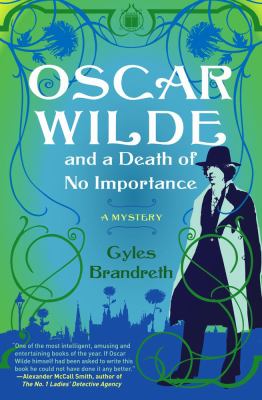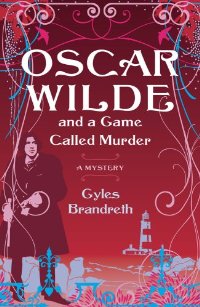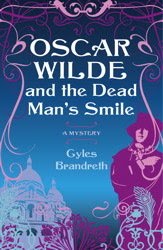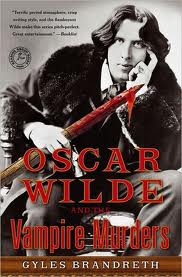Chuck Klosterman is my favorite author, best known for Sex, Drugs and Cocoa Puffs among many other similar works. I Wear the Black Hat is his latest book published in July of this year. Klosterman's work is a bit hard to explain (the book jacket says, "Klosterman continues to be the only writer doing whatever it is he's doing") but he essentially gives thematic insight to major pop culture events - past subjects have included why Kurt Cobain's death affected so many people and the impact of the events in Waco, Texas, with the Branch Davidians. He also wrote an entire book about classic heavy metal (Fargo Rock City).
I Wear the Black Hat takes a focus on villains and villainous behavior - the subtitle is "Grappling with Villains (Real and Imagined)." Klosterman's achievement in all of his works, including this one, is that he is able to pair intellectual ideas and theory with pop culture events and references. He began as a rock writer, so that is of course going to influence what he chooses to write about, but he is also incredibly smart, funny and insightful in how he writes about these topics. In one chapter he manages to tie together Rocky and Bullwinkle, Machiavelli and the Penn State scandal with Jerry Sandusky and Joe Paterno - cartoon, 16th century politics and 21st century sports scandal. I would definitely recommend this book if you enjoy intellectual commentary on contemporary popular culture and/or have an interest in villains.
Meaghan Lanier shares her thoughts on this bit of non-fiction by Chuck Klosterman.
0 Comments
Alexandra Patterson is at it again with another FANTASTIC review and list of read-alikes! This time she presents us with this Elizabeth Freemantle novel. Despite the large number of books out there about Anne Boleyn, Catherine of Aragon and Henry himself, I haven’t come across many from Katherine Parr’s perspective. Parr was the King’s last wife and had the good fortune to outlive him and to remarry. Though there’s obviously more intrigue behind Boleyn and his other wives, I find the idea of Parr’s position fascinating. She had been at court when the other wives were present and obviously knew what had happened to them. She’d also seen Henry’s physical and mental health decline drastically over a few years. And yet she married him. Martha Waters brings us two reviews in quick succession today starting with I Capture the Castle by Dodie Smith. This is one of my favorite books and I hadn't read it in a few years, so I thought it was time for a reread. This book, which was published in the 40s (and is by the author of 101 Dalmations, holla!) covers six months in the life of 17-year-old Cassandra Mortmain, who lives with her family in a crumbling castle in the English countryside. It. Is. Awesome. I mean, England + 1940s = I am going to love it, but I think the real strength of this book is that Cassandra is a GREAT narrator. She is funny and sassy and makes really awesome observations, and I am always deeply sad to come to the last page of this book. I would read twelve more volumes about her life, because she is an awesome character. Anyway, the whole book is charming and never fails to cheer me up, and I recommend it to people whenever I get the chance, so now I'm recommending it to all of you! Read it. Next up is The Engagements by J. Courtney Sullivan. This is the story of four different couples at different points in their relationships, and it examines the nature of love, marriage, and our national fixation with diamond engagement rings and all they've come to symbolize. It's really interesting to read about these four seemingly unrelated story lines and then slowly come to see how they are all tied together. There's one of the four that I thought seemed a little bit less...resolved, I guess is the word I'm looking for, but overall I think the author did a great job at tying everything together, and also at getting into the heads and presenting the worldviews of some very different characters. It was quite well-written, and I really liked it. Alexandra brings us another winner with this Emily Croy Barker novel. Have you ever stumbled across a book that is so different than what you thought it would be that it’s hard to get into it? I picked The Thinking Woman’s Guide to Real Magic from my TBR pile expecting a story about witches. Seems a reasonable assumption, no? Music fans, WAKE UP! Meaghan Lanier reviews this Murray Engleheart and Arnaud Durieux book. Tune in and listen up! I borrowed this book from my dad, and we are both big AC/DC fans. Of course he was around when they are coming up, so he already knew several of the facts in the book that I did not know. For example, I knew Bon Scott (the original lead singer) had died early in their career, but I didn't know at what point (right of the cusp of stardom) nor how he died (mysteriously). The authors constructed this book from examining what seems like every piece of press ever published about the band (around 1300 interviews) as well as 75 new interviews. The book has a heavy focus on the band's beginnings and rise to the top, which is interesting and useful for fans who already know about AC/DC as a world-famous group. This book showcases what they were like before they reached that status and how they got to that point, dispelling many myths along the way. Here's Martha's reaction to a little non-fiction action by Tina Fey. I've been wanting to read this for a while, and I'm so glad I decided to get it on audiobook, because as funny as I'm sure the book is to read, it is truly hilarious to have Tina Fey read it to you herself. The chapters are short and interesting, and there's a nice balance of humor and serious thought about issues like the double-standard that female comediennes must put up with. It also includes a clip of her first SNL appearance as Tina Fey in the '08 presidential campaign - I hadn't watched that for a while, and I had forgotten how hilarious it was until I listened to it again on the audiobook. Anyway, my main conclusion is that I think we should all try to be best friends with Tina Fey. Martha Waters keeps the classic ball rolling with this one by Harper Lee. I re-read To Kill a Mockingbird every summer, and it never disappoints. I love this book so much that I can't hope to offer any sort of thoughtful, critical review, but I will say that if you haven't read this book since you were forced to read it in high school English class, I highly recommend going back and re-reading it as an adult. You will appreciate it so much more. Everything about this book is wonderful, but I especially appreciate the fact that no detail that is offered proves to be insignificant. It's so well thought out and plotted, and the novel is so well-written and moving...are you still reading this review? Just go re-read it! It is, truly, the best. |






 RSS Feed
RSS Feed